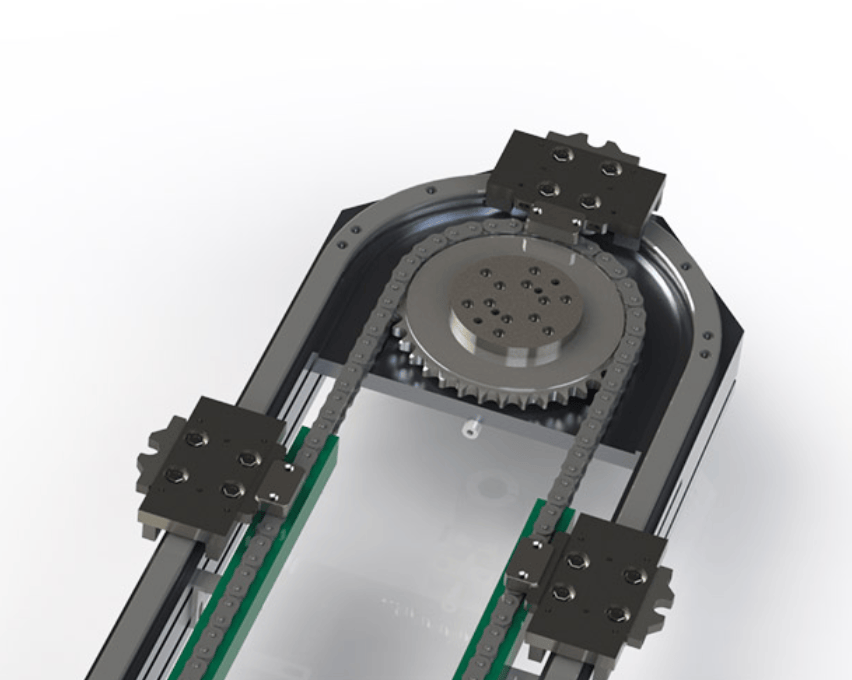Why is it that the same chain line shines like new for 5 years for some and rusts in 1 year for others?Let's get real today - no need to memorise manuals, no complicated theories, let's teach you a few tricks!Workshop masters of the bottom of the maintenance of hard work, allowing the conveyor line life to be pulled right up to full capacity!
Tip 1: Daily Cleaning - Don't let dust be a "chronic poison"!
You think dust is just a dirty spot? No. It is the "sandpaper" of the chain! It's the "sandpaper" of the chain that wears down your joints every day. Remember the three axes:
- Sweep twice before and after work: Take.Compressed air blowing of chain seams(Don't blow with your mouth!) Use a soft-bristled brush to pick out the dead spots.
- grease grinder: For food factoriesEdible Alkaline CleanerIf you have a machine shop, use paraffin, spray it for 10 minutes and wipe it off.
- a death trap: Never wash with water! A newcomer to a factory used water to wash the motor, burnt out on the same day and shut down for 8 hours.
White asked anxiously:: "How do you clean an assembly line that can't be stopped?"
Teacher's Tips: Hanging in the idle sectionRotating Brush RollerAutomatic ash cleaning while running
Tip 2: Lubrication and Maintenance - It's better to add the wrong oil than no oil at all.
More lube is not better! Ever seen a chain soaking in oil and slipping? That's a disaster scene...
Golden Rule of Lubrication::
| Chain type | lubrication cycle | killer product |
|---|---|---|
| Normal Roller Chain | 1-3 months | High temperature chain grease |
| Food grade stainless steel chain | 6 months | NSF certificationWhite grease |
| Engineering Plastic Chain | Lifetime lubrication-free | -- |
Practical points:
- Drip position: AlignmentChain hinge seamDon't waste it on the plates.
- The amount should be precise: When you touch your fingers to the joints after application, there is a film of oil, but it doesn't drip off.
- A case of blood and tearsAn auto parts factory used ordinary grease, high-temperature melting anti-sticking iron filings, the chain was scrapped in 3 months.
Tip 3: Tension Adjustment - Loosening and Tightening Determines the Line of Life and Death
The chain is too tight like a bandage strangling the veins, too loose like a trouser belt always falling out of the crotch...Teach you tofreehand testing::
- Stop the machine by pressing on the middle of the chain.Sinking = 1.5 times link diameterIdeal (e.g. if the chain is 20mm thick, 30mm down is just right)
- Listen to the sound: running in the "click" sound, eighty percent is loose jump teeth
- Look for deformation: chain between two sprocketssagNeeds to be tightened.straightenHurry up and get loose!
regulator::
- Light wirespring tensioner(Stretching on its own)
- Heavy duty line must be fittedHydraulic compensation device(Tolerance <2mm)
Tip #4: Critical Point Inspection - Save $10,000 per month on repairs
Remember these four.lethal point, spend 10 minutes a month checking it out:
- Sprocket teeth: Take a coin and jam it into the root of the tooth, and change it immediately if you can fit it into a $1 coin.
- roller bearingRustling sound when you turn the wheel by hand? Lubricant won't help.
- Motor temperature: Back of hand against motor housing.Hot to shrink >70°C(Normal ≤ 45°C)
- Chain elongation: Measurement of 10 chain lengths.Super Standard 3%immediate replacement
Rookie confusion:: "How do you tell when it's time to change the chain?"
hardcore indicator::
- Carbon steel chain: rust spots spread to the inside of the chain plate
- Stainless steel chain: cracked white spots at joints
- Plastic chain: brittle and breaks when folded
The fifth move: extreme environmental response - high temperature / low temperature / corrosion of the three devils
Don't believe in the "universal chain", special scenarios should use special tactics:
hot battlefield(>300°C):
- dailyair cooling and descending temperatures: Compressed air blowing of chain seams
- MonthlyMolybdenum disulphide paste(800°C resistant)
- Watering is absolutely prohibited! A foundry poured water to cool down, the chain broke on the spot due to thermal expansion and contraction.
frozen battleground(<-10°C):
- changeLow temperature hydraulic oil(freezing point -40°C)
- pre-launchNo-load warm-up10 minutes.
acid-base battlefield::
- For chemical plantsCeramic Coated ChainI'll run around the sulphuric acid pool.
- MonthlypH test paper to measure the surface of the chainThe acidity is immediately neutralised by alkaline water.
A final word of truth.::
I've seen too many factories.save a little money and lose a lot of it--Carbon steel chain is cheaper than 50,000 when you buy it, but as a result, you spend 80,000 on maintenance every year; Stainless steel chain is 100,000 expensive, but it earns 300,000 in return for 10 years of maintenance-free. Maintenance is not a cost, it isA sure-fire investmentThe next time you hear a chain squeak, don't wait for it to break! The next time you hear a chain squeak, don't wait for it to break, just follow these five tips. Remember.A machine is more honest than a man, you treat it well and it works its arse off for you!













